The island of Kythira (also spelled Kythera, Kithira, or Cythera), known in Venetian times as Tsirigo or Cerigo, has been celebrated since antiquity as the mythical birthplace of Aphrodite, the goddess of love and beauty.
But beyond its divine associations, Kythira’s story is a living chronicle of civilizations, migrations, and a culture that bridges Greece’s mainland and its island world.
The island of Kythira (Kythera, Kithira or Cythera), known also by its older Venetian name Tsirigo or Cerigo, is reputed in Greek mythology to be the birthplace of Aphrodite, the goddess of love. The name Kythira can be traced far back in history. Homer mentions the island in his epic work “The Iliad”, where the goddess of love Aphrodite takes on the name Kythereia (Akytheros being the person devoid of charm or attraction). However, the name Kythira appears in the works of several other important writers of ancient times; Herodotus, Dionysis, Xenofon (who uses the term Kytherian land in his work “Hellenica”), and even Aristotles – who remarks that the island was also known as Porphyrousa, after the purple dye produced from the marine rock snail Murex.
An alternative theory was supported by the geographer Isidoros (1st century A.D.), who believed that the island was named after the deity Kythereia (Aphrodite) and not the other way around. He was the first to illustrate the meaning of the verb “kefto” (to hide one’s love) and it’s relationship to both the goddess and the island. The verb “kefto” translates as “to hide one’s love”; according to Isidores’ rationale, those who make love on the island (Kythira) discover the hidden passion of love. The name “Kythira”, which in Greek is used in the plural form, could have be extended to include the population of neighbouring Antikytherians.
What, however, is the connection between the two names, Kythira and Tsirigo? Several studies suggest a relationship between the two: either both names were synonymous or one developed from the other.
Interestingly enough, a region exists on Cyprus (Aphrodite’s other island) called Kythraia or Kythra, where several statues of the goddess Aphrodite have been found. The larger area goes by the name of Tzirka.
Aphrodites’ mythological birth from the waves has been interpreted by palaeontologists as an allegorical attempt by the ancients to explain the emergence of island itself from the sea. This theory is supported by a large number of palaeontological findings of marine fossils across extensive areas on Kythira, Mitata and Viaradika.
Kythira is characterised by a temperate Mediterranean climate. Mean annual temperatures lie around 20°C with an average annual rainfall of 600 mm (approx. 60 days of rainfall) with an average cloud coverage of four (scale 1-10). Average measured wind strength lies around 3-4 beauforts, with prevaling northeastern and westerly winds.
During springtime, the southwestern wind “Proventsa” commonly brings low clouds and fog and requires special attention by fishermen and mariners. Snow is rare, with temperatures seldomly dropping below -4°C.
In 2001, the population of Kythira counted a total of 3,354 inhabitants. The most people live in the island’s capital Chora with 579 inhabitants, followed by the central villages Livadi with 370 and Potamos with 400 residents. The remaining islanders are spread over 60 smaller villages across the island. Administratively, Kythira and its smaller neighbouring island of Antikythera constitute their own municipality under the Province of Kythera, which falls under the Prefecture of Piraeus. Historically, Kythera and Antikythira belong to the Ionian islands.
Kythira became part of Greece with the cession of the Ionian Islands (to which Kythira then belonged) to the new King George I of Greece.
From 1867 until 1929, Kythira belonged administratively to the Argolid-Korinthian prefecture and judicially to the Court of Gytheio. In 1929 the area fell under the administration of the Attican-Boeotian county and the jurisdiction of the Court of Piraeus. Finally, with the establishment of the Prefecture of Piraeus, the islands came under the latter.
On Kythira there is also a Justice of the Peace and a Magistrates’ court. Previously a deputy police department resided in the island’s capital, with one station in Potamos and one on Antikythira. The Port Authorities of Gytheio excercised port control on Kythira and Antikythira until 1986, with stations in Agia Pelagia and Kapsali. As of 1987 both came under the Port Authority of Neapolis Vion, while the Gytheio Port Authority became a subdivision.
There are two Customs Inspection stations, one in Agia Pelagia and one in Kapsali, which both fall under Gytheio Customs Service.
By the end of 1928 there were 22 schools operating on Kythira (and one on Antikythira): 15 boy’s schools and 8 girl’s schools. In 1929 they were merged into 15 mixed-gender institutions, with approx. 1500 students enrolled. The first proper mixed-gender high school was founded in 1921 in the island’s capital of Chora, with approx. 150 enrolled pupils. In 1964, under the government of George Papandreou, the school system was divided into 3-year middle school (Gymnasio) and three-year high school (Lykeio). Under the military junta in 1967, the high school (Lykeio) was abolished and the 6-year Gymnasio introduced, by which time the island’s population had already started to shrink due to urbanization.
The island’s population is made up mostly of farmers and employers – however, the increase in tourism and the arrival of semi-permanent settlers has shifted the focus of income to tourism enterprises and rental accomodation. The island’s main agricultural products are olive oil and honey. A positive factor in the growth of the tourism sector is the fact that residential development is proceeding at a controlled rate that does not seem to affect local rates. Ecumenically, Kythira constitutes its own metropolitan bishopric, which is seated in Chora.

Location: North
Closest Village: Avlemonas
Beach: Small, rock platforms
Access: By road (Asphalt)
Facilities: Drinks, Food, Cafes/Restaurants, Toilets, Shops
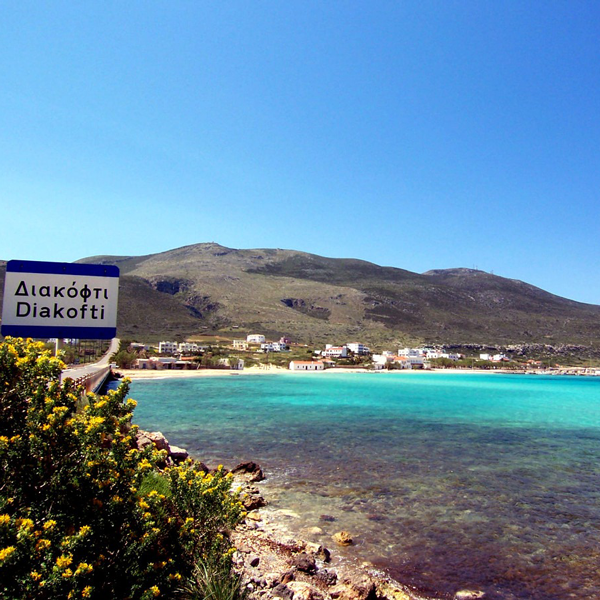
Location: East
Closest Village: Diakofti
Beach: Medium, sand
Access: By road (Asphalt)
Facilities: Drinks, Food, Cafes/Restaurants, Toilets, Shops, Umbrellas & Sunbeds

Location: East
Closest Village: Paleopoli
Beach: Medium, small pebbles and sand
Access: By road (Asphalt) & steps
Facilities: Drinks, Food
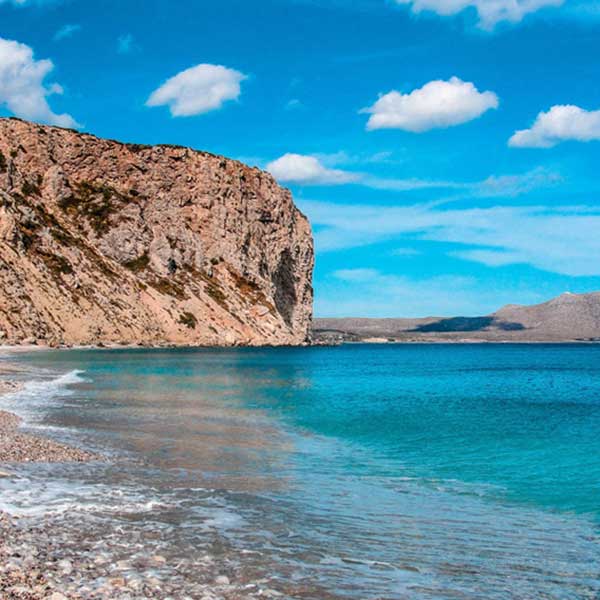
Location: East
Closest Village: Livadi/Karvounades
Beach: Large, pebbles & sand
Access: By road (Asphalt)
Facilities: Drinks, Food, Umbrellas & Sunbeds, Toilets
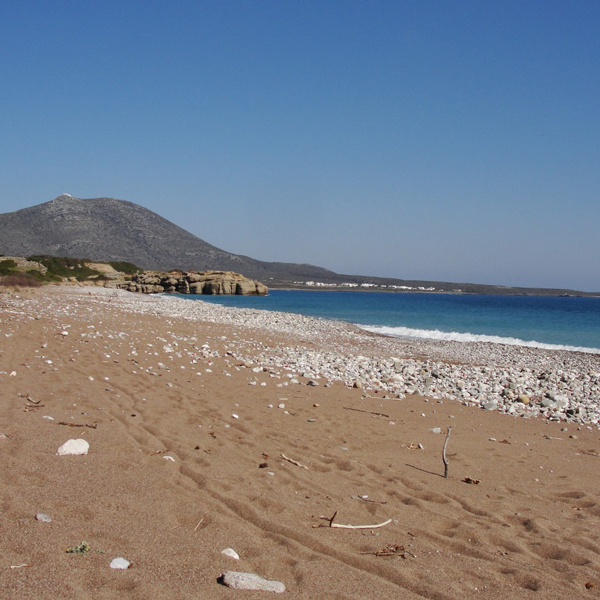
Location: East
Closest Village: Paleopoli
Beach: Large, small pebbles and sand
Access: By road (Dirt)
Facilities: None
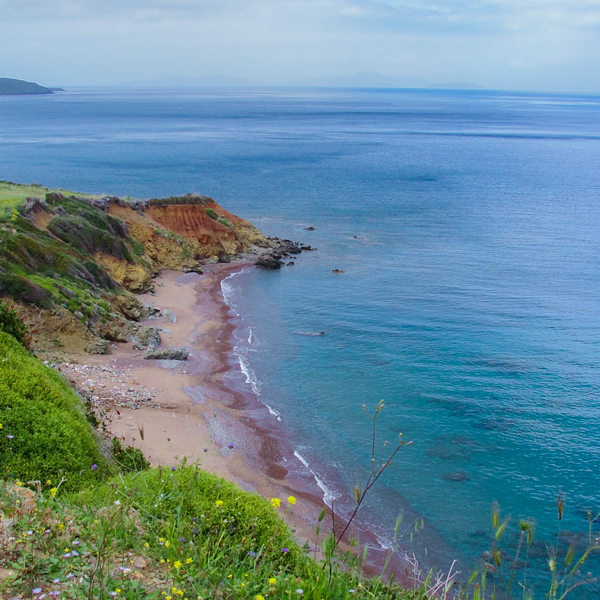
Location: East
Closest Village: Agia Pelagia
Beach: Small, small pebbles and sand
Access: By road (Asphalt)
Facilities: None

Location: East
Closest Village: Paleopoli
Beach: Large, small pebbles and sand
Access: By road (Asphalt)
Facilities: Umbrellas & Sunbeds, Drinks, Food, Toilets, Cafes/Restaurants

Location: North East
Closest Village: Platia Ammos
Beach: Medium, sand
Access: By road (Asphalt)
Facilities: Umbrellas & Sunbeds, Drinks, Food, Toilets, Cafes/Restaurants
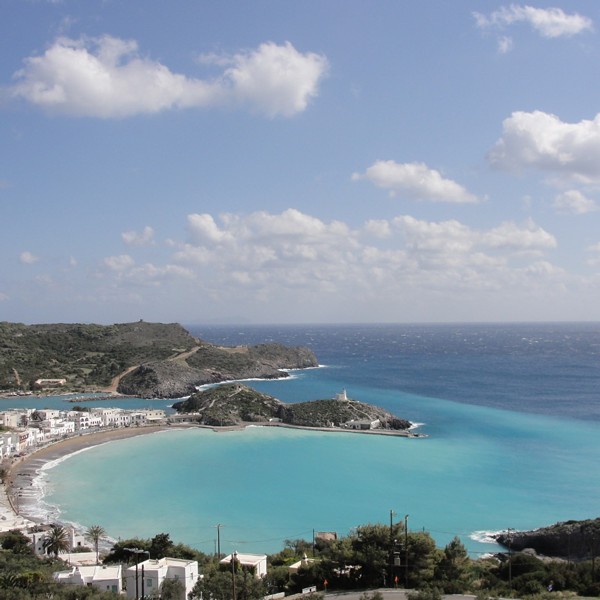
Kapsali, perhaps the most famous village of the island, lies on the south coast beneath Castro, the impressive fortress of Chora. The seaside town offers shops, restaurants and bars, which cover the visitor’s every need. From here, you can take a short boatride to the islet of Chytra, visit the monastery of Agios Ioannis tucked into the hillside overhead, or simply enjoy a swim in the crystal clear waters of Kapsali and nearby Sparagario.

The island’s capital, Chora is often also referred to simply as “Kythira”. Here you can take a stroll through the picturesque narrowstreets filled with small shops and traditional architecture. A definite must-see is the impressive Venetian fortress, Castro, with its majestic view over the bay of Kapsali. Take the opportunity to try some local Kythirian sweets, purchase some souvenirs to take home, or simply relax in the ‘plateia’, the town square.
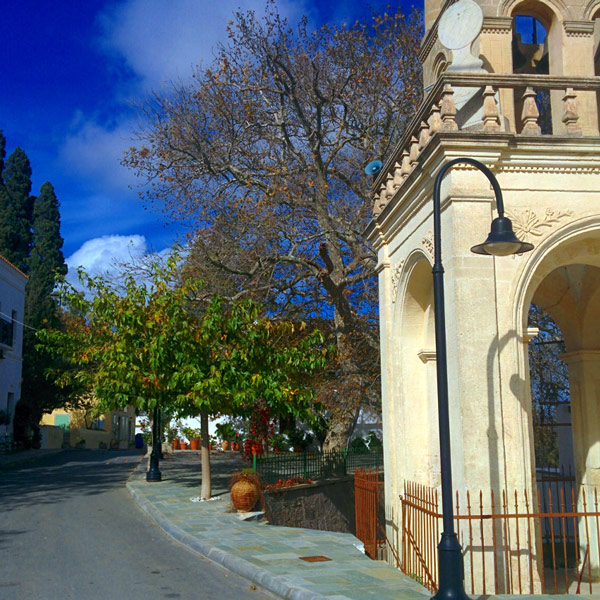
Located in the western part of the island, the charming village of Mylopotamos is a destination not to be missed. One of the greenest areas of the island, the visitor is truly spoilt for choice: take a walk along the path by the watermills, visit the hidden waterfall of Fonissa, the stunning cave of Agia Sofia, the secluded beach of Kalami or admire the beautiful sunset from the castle in lower Mylopotamos.

In the western part of Kythira, through the village of Kalokerines and sheltered between the pine trees, lies the Monastery of the Virgin Myrtidiotissa (“of the Myrtle Tree”), who is considered the patroness of Kythira. A visit to the miraculous icon of the Virgin, and to learn of it’s history, is an experience that no visitor should miss out on.

Behind the central town of Livadi lies the impressive stone bridge of Katouni. Commissioned during the British occupation by Colonel Macfell, this is the first and largest stone bridge in Greece still functional today. Resting on 13 arches, the bridge measures 110m in total length, with a height of 15m and width of 6m. Construction started in 1821 and was completed in 1826 by forced labour.
Rumour has it that the bridge was built for the sake of Macfell’s mistress; while the colonel lived in Katouni, she lived in the opposite village of Livadi. In order for the two to meet more easily, the English Colonel ordered a bridge to be built across the dividing valley.
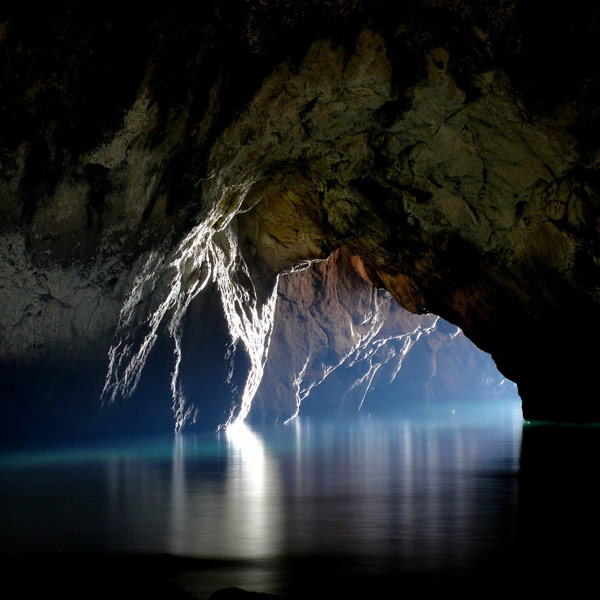
Opposite Kapsali bay, just 3 miles away, is the islet “Chytra”, which is also called “Egg” by the locals. It has an area of about 40 acres, while the large and steep height combined with the huge cave with the thousands of colors of its seabed make it a visit that you should not miss!!!

Famous for its fine quality and characteristic taste, and considered by many who have tried it to be the greatest honey in the world, Kytherian thyme honey is a regular award-winner at major exhibitions. The rich flora of wild island herbs and hard work of local beekeepers produces a product worthy of its reputation and history – evident from the first spoonful!
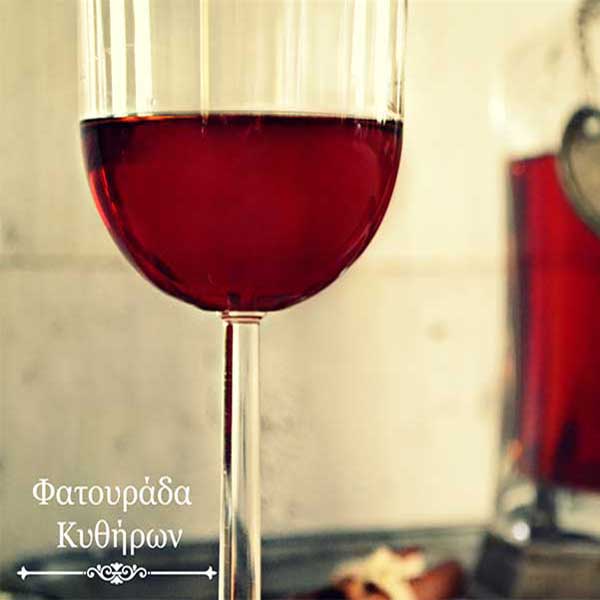
A traditional drink of Kythira, this heady brandy is based on the island’s local grape pomace, tsipoura (or raki) . The spirit was originally produced at home by the locals, and the most common recipe is prepared with cinnamon and cloves. A tasty digestive with a sweet characteristic aroma, Fatourada is drunk warm, cold, with crushed ice or in cocktails. Some rarer homemade varieties of the lighter Fatourou also exist, which are likewise produced from tsipoura and natural fruits. The original recipe contains only tsipoura and natural flavours, with no industrial alcohol or colourings added.
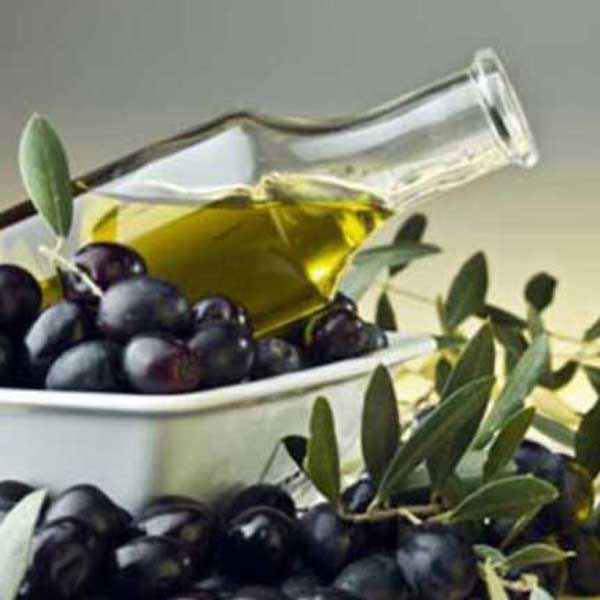
The systematic cultivation of olives began on Kythira under British rule. Today, olive trees are the economically most important crop on the whole island. The most common varieties grown are Koroneiki. The low acidity and exquisite taste palette ranks Kytherian olive oil among the finest in Greece.

